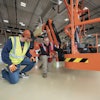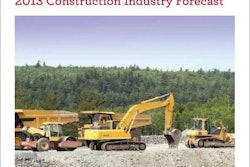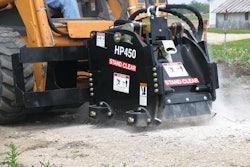I’m sitting here perusing a pile of economic and construction industry surveys and stats trying to find that magic bullet that will put more dollars in your pocket. As you know, that’s tough to do these days.
As I was thumbing through, I noticed some interesting facts that don’t seem to be helping the situation:
- Equipment prices are increasing because of commodity prices.
- Further price increases are being driven by regulation, including Tier 4 emissions requirements.
- Double-digit or high single-digit price increases seem to be the norm for the short term.
- The amount of construction spending per unit of construction equipment sold went from $13 million in 2009 to about $5.5 million estimated for 2013.
Add it all up and you have a compelling story as to why equipment rental is becoming the primary source of equipment acquisition in the construction industry.
Properly Analyze Your Situation
One of the publications I reviewed was the Wells Fargo 2013 Construction Industry Forecast, which includes survey questions for both equipment dealers and contractors.
Comparing the last three years, it appears that 47% of contractors want improved equipment pricing (up from 41% in 2010) and 15% want additional finance options (14% in 2010). On the construction equipment dealer side, 35% of those surveyed want improved pricing (up from 30% in 2010), 27% want improved inventory availability and 12% want better finance options. Very similar results for both dealers and contractors.
Unfortunately, on the pricing side, the cost to own is going to remain an issue until commodity prices recede and Tier 4 costs are potentially recovered. With construction backlogs holding steady, and the amount of work generated per units sold lower than it was in 1992, the decision to buy a unit has to be backed up with high utilization estimates and the ability to earn a return through equipment charges to the job.
We all know there are regions of the country where the workload is so strong, you know you will have a positive experience buying new equipment, even given the higher total cost to own and operate. For those of us who have to think twice about the cash flow associated with an equipment purchase, the experience may be positive or negative depending on whether the business has an extended backlog, and what is being replaced.
If you are adding to the fleet rather than replacing a unit, then you better be able to properly analyze your situation to avoid negative cash flow implications should utilization not materialize as planned. When I say properly analyze the situation, I mean:
- having work estimates that are realistic, proper accounting and job costing records and actual hours the equipment is used on a job (vs. the time stored on site until needed);
- knowing the financing cost;
- using a realistic deprecation rate;
- using the best tax treatment available for your situation;
- tracking parts and service/maintenance.
Without this information you can hardly expect to be able to calculate ROI on the unit, or whether it is providing a positive or negative cash flow compared to buying used or renting to fill equipment needs.
Buying new or used or renting is a complicated decision. There are balance sheet, income statement, bonding, cash flow and tax implications. Of course, the one that matters most is cash flow, which is really the culmination of all the variables in play.
In my other life as a CFO for a Midwestern rental company, I see a definite shift to daily and weekly rentals away from longer rentals. I think it’s because contractors have concluded: ”This thing is costing me money sitting here, so let’s get it when we need it, use it and return it as soon as possible.”
Whether you own it or rent it, you have the same questions and issues to deal with. But with a rental, you know what it costs; you don’t have to figure it out. As I have said previously, unit utilization has to be pretty high to support ownership in the economy we live in today.
Changes to Sec 179 Carryover
Let’s talk about taxes for a moment. You are aware of the Sec 179 expensing parameters in play for 2013. Forget the amount you can expense for the moment, because I want to stress that Sec 179 is supposed to be reduced to $25,000 in 2014. That means if you don’t use the Sec 179 you elected in 2013, you only get to use $25,000 of the carryover for 2014, etc. It’s easy to say you can write off the cost of a new or used unit, but be aware of this potential trap.
For example, if you spent $500,000 on a piece of equipment, elected Sec 179 treatment and in fact broke even for tax purposes, the Sec 179 available to you going forward would be $25,000 per year. Gee, how long would it take to use that carryover? In short, you have to do your homework to decide whether to use Bonus for new purchases or MACRS for used purchases instead of Sec 179 treatment.
On the positive side, the IRS now allows you to amend 2013 if you make that mistake. This was not the case in prior years. In any event, amending and re-filing can be time consuming and costly. Better to spend the time to figure it out initially.
Contractors have learned to operate more efficiently because they have to, and plan ahead for positive cash flow. Carefully managing equipment costs is one of those areas where changes are taking place, and will continue to take place in the future as equipment becomes more technologically advanced and more expensive.




















